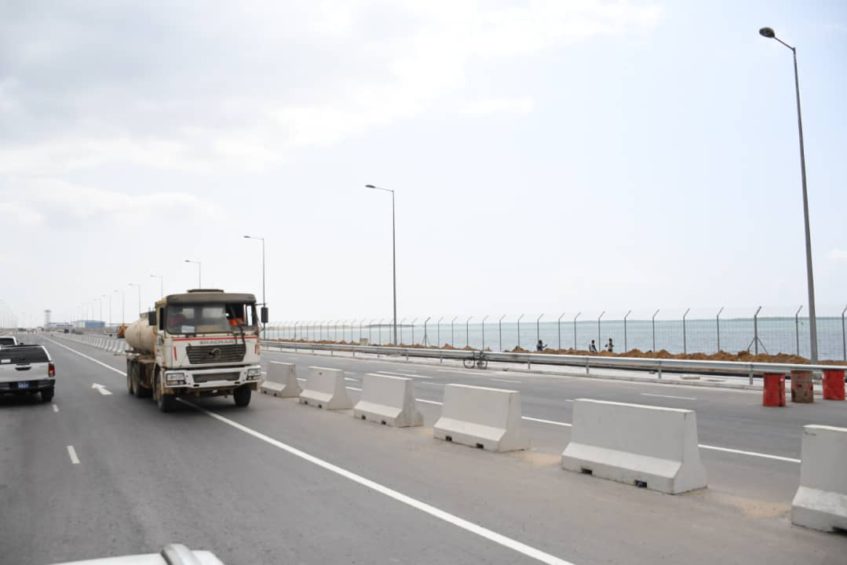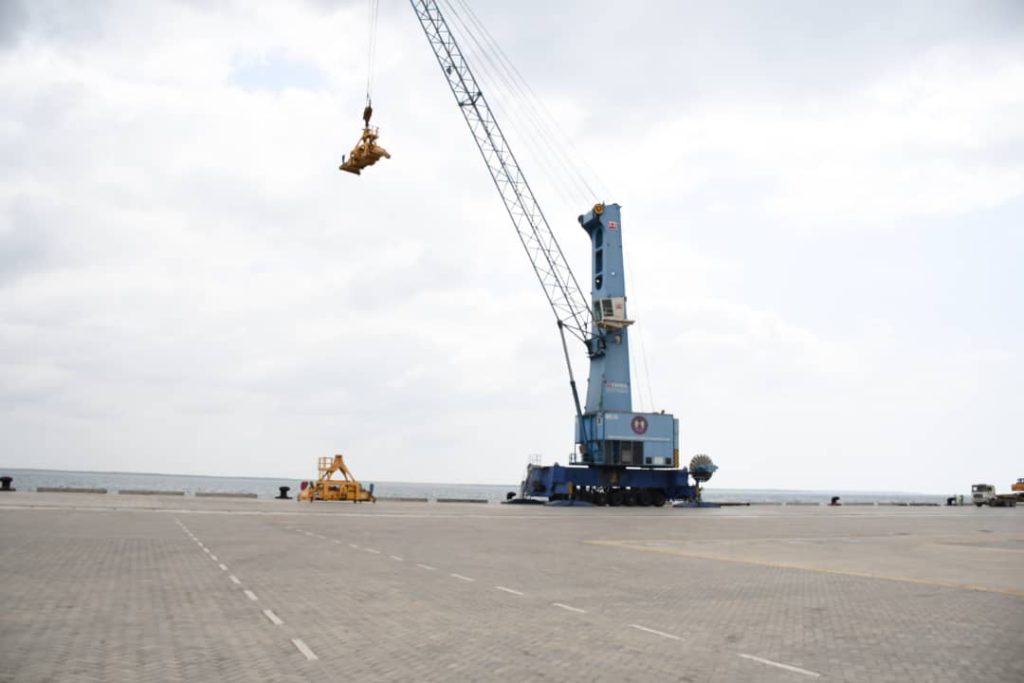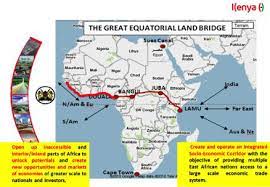
Kenyan highway from Lamu Port to South Sudan and Ethiopian Border / Photo Lasuba Memo/ Date 02.26.2022
Kenyan authorities say South Sudan is lagging far behind the LAPSSET infrastructure development initiative that aims to boost trade among the partner states and forge regional integration.
In 2013, Kenya, South Sudan and Ethiopia launched the LAPSSET (Lamu Port-South Sudan-Ethiopia Transport Corridor) project to enable infrastructure inter-connectivity with the aim to help facilitate movement of goods and services among the three countries.
BACKGROUND
According to Kenyan government, the LAPSSET (Lamu Port and South Sudan Ethiopia Transport) corridor project was first conceived in 1975 but it never took off due to some inexplicable reasons.
The project was supposed to be East Africa’s light to economic growth and this is the reason why it was later included in Kenya’s vision 2030.
In 2009, the project was estimated to cost $16 billion but the estimate has risen to $29 billion due to world’s economic hard times.
The World Bank reportedly funded the feasibility study and design of the transport corridor while Kenya availed Kshs.2 billion for the construction of three berths at Lamu which has been completed.
The soon to be the biggest port in East Africa once fully completed is anticipated to host ships from Europe, Asia and other continents for shipping imports into the region and exports out of the region.
This is being aided with a standard gauge railway. The railway network was anticipated to cover Southern Sudan’s town of Juba and Kenya’s Lamu a distance of 1720 kilometers supposedly by 2015.
But the process delayed to political changes and the Covid-19 pandemic.
The railway line is expected to have at least five trains moving at a speed of 160 kilometers per hour on daily basis.
Another facilities are Oil pipelines. The pipelines will run between South Sudan and Ethiopia enabling Sudan to export its black gold to the rest of the world.
There will also be airports and depot stations in the towns of Isiolo and Juba.

According to the implementation plan, Kenya would construct Lamu Port alongside highways, standard gauge railway lines and crude oil pipelines to its borders with South Sudan and Ethiopia.
At the same time, the deal obliged South Sudan and Ethiopia to develop road infrastructure to their common borders with Kenya.
Stephen Ikua who is the Director General of the Lamu Port South-Sudan Ethiopia Transit Corridor Authority said Kenya has done nearly 80 percent of the 500-killimeter highways from Lamu port to Ethiopia and South Sudan borders.
“So, that is the kind of commitment we would like to see because for us the first thing is the issue of the inter connectivity, first you have to put up the port,” he said.
Ikua attributed the success to the independence of the institution and his governments’ commitment to allocate budget for the project in each financial year.
According to him, unlike South Sudan, Ethiopia has on its side completed construction of a highway and the two counties are now inter-connected.
Ikua added that south Sudan is yet to establish a well-defined structure to spear-head the LAPSSET project.
He said with establishing an independent institution specifically for the project couple with annual budget allocation, Kenya was able to move the project faster.
“Now we are moving to the next phase which is the issue of the railway, and in the third phase, all of these activities are happening concurrently.”
Ikua said his country has demonstrated a commitment to fulfill its obligations of the multi-lateral partnership the countries entered into –something he said has attracted support from international donors.
The United Nations Commission for Africa is one of the UN agencies providing technical support to Kenya in its quest to complete the Lamu Port Project.
Speaking at the port last Friday, Francis Osiemo, a consultant with the commission said South Sudan needed to take up the project seriously as one that can improve its economy and the livelihood of its citizens.
He said “Kenya has done it, Ethiopia has done it, we are waiting for south Suda,” stressing that “we don’t see any serious construction taking place to kind of harmonize the activities of both sides.”
On the call for South Sudan to establish a LAPSSET institution for easy facilitation, Osiemo agreed with Ikua, the Director General of the Lamu Port South-Sudan Ethiopia Transit Corridor Authority.
“We are saying for trans-boundary construction to happen there must be institutions, because this time we are supposed to demonstrate first from our own countries to see whether we have this in our budget in the first place.”
According to the head of operations at the Lamu Port, Peter Masindi, Kenya has so far constructed three of the planned 23 landsides with each covering 400 meters.
Considered as one of the biggest ports in Africa meeting an international standard, the three sites are now operational.
“The port is ready and we encourage them [South Sudan) to start using this port of Lamu,” Mashindi appealed saying “the time is now. So when you come late then another person, another party might grab the opportunity,”
The port, highways, standard gauge railway line and crude oil pipelines leading to South Sudan are estimated to cost the Kenyan government roughly about 24 billion US dollars including resort cities.
Masindi now encouraging South Sudanese investors to cease the opportunities to set up businesses along the corridor.
Speaking at the Lamu port, South Sudan’s Acting Director General for Road Transport and Safety, Engineer Lado Tongun said “We are to take the message home that now projects is already a reality and we should now harry up to do our part to make this project useful and operational to south Sudan.”
Asked on what South Sudan has done so far with regards to the LAPSSET project Eng. Lado responded saying “ I am sure that our government will do it’s an obligation.”
According to Lado some work has started, but said “for us to use it, we need to hurry up.”
Benefits
Although the entire project will take long and millions of dollars to complete, the region will reap vast benefits.
It is expected that the three countries and other East African Countries’ will register increase in Gross Domestic Production.
The GDP of East African states will increase by a large percentage therefore improving the standards of living of the inhabitants.
Secondly, the project will create competitiveness in global maritime trade as ships from the whole world will be able to offload their cargo.
Thirdly, it will open landlocked countries including South Sudan to the global trade. Fourthly, create employment. Both large scale and small scale sectors will create vast employment opportunities therefore removing the economic problem of unemployment.
Fifthly, the project will boost social and cultural interaction between East and Central Africa. This will also help calm down the political hostility in some parts of the region.
As such, the East African region will be a very big financial hub once the project is completed.
According to the LAPSSET project plan, South Sudan will be become a transit point to the Western countries including Cameron.

In order to exert pressure on Juba, Kenya and Ethiopia are expecting to hold the next rotational ministerial meeting in South Sudan in June this year.
The northern transport corridor is also regarded as one of the African Union’s 2063 vision.
It was admitted as one of the 11 African Union Presidential Infrastructure Champion Initiatives (PICI) which said to give it a continental platform for support and development.
It seeks to develop a 37,000 km modern highways, 30, 200 km modern railways and expansion three key ports –Port Durban, Port Lamu and Suez Canal to a capacity of 1.3 billion tones combined.
Support Eye Radio, the first independent radio broadcaster of news, information & entertainment in South Sudan.
Make a monthly or a one off contribution.
Copyright 2024. All rights reserved. Eye Radio is a product of Eye Media Limited.